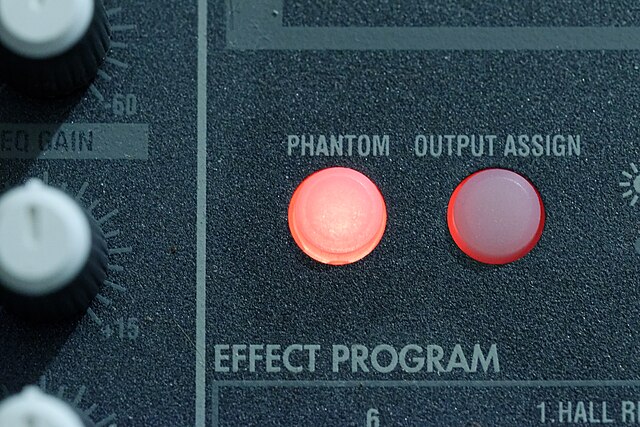Phantom power, in the context of professional audio equipment, is DC electric power equally applied to both signal wires in balanced microphone cables, forming a phantom circuit, to operate microphones that contain active electronic circuitry.
It is best known as a convenient power source for condenser microphones, though many active direct boxes also use it. The technique is also used in other applications where power supply and signal communication take place over the same wires.
A condenser microphone requires power to produce a DC polarizing voltage and to power an internal amplifier required to drive long cables
Phantom power button and indicator light
An external phantom power supply.
A microphone, colloquially called a mic, or mike, is a transducer that converts sound into an electrical signal. Microphones are used in many applications such as telephones, hearing aids, public address systems for concert halls and public events, motion picture production, live and recorded audio engineering, sound recording, two-way radios, megaphones, and radio and television broadcasting. They are also used in computers and other electronic devices, such as mobile phones, for recording sounds, speech recognition, VoIP, and other purposes, such as ultrasonic sensors or knock sensors.
Shure Brothers microphone, model 55S, multi-impedance "Small Unidyne" dynamic from 1951
David Edward Hughes invented a carbon microphone in the 1870s.
Humphrey Bogart, Jack Brown, and Lauren Bacall with RCA Varacoustic MI-6203 ribbon microphones broadcast to troops overseas during World War II.
Inside the Oktava 319 condenser microphone







